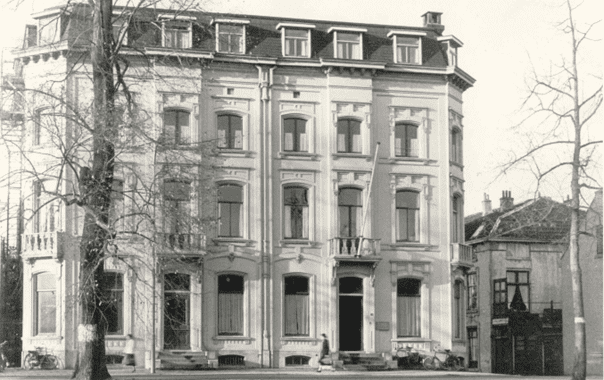The period around 1972, 50 years ago was in hindsight a time of change. Much of the research lines of the crystallography group in Utrecht had been curiosity driven and were related to research started after WW-II by Professor Bijvoet. Among his many interests were the development of the isomorphous replacement techniques for solving crystal structures and the ground breaking use of anomalous dispersion to determine the absolute configuration of chiral molecules. The first such an absolute structure determination was done by Bijvoet and his PhD students Peerdeman (his successor) and van Bommel on a rubidium salt of tartaric acid using X-ray diffraction photographic film methods. This result, that was consistent with the arbitrary choice by Fisher, was first reported in 1949 at a meeting in the USA. This led to investigations of the crystal structures of other tartrates and similar small molecules such as malonic acid and the study of hydrogen bonding. Those were light atom compounds that needed different methods to solve the phase problem as those available for heavy atom structures. This spawned local interest in and development of so called Direct Methods, in particular of a technique called Symbolic Addition that worked well for solving centro-symmetric structures. X-ray diffraction data were collected with labour intensive film techniques and later on with semi-automatic three-circle single point detector based diffractometers for which in-house data collection software was developed. Computer based calculations and software development needed for the structure determination were done initially on a Dutch made in-house ZEBRA computer, being the first one at Utrecht University. That computing facility was, when I started in 1966 as a crystallography student, already replaced by a Dutch made Electrologica X8 computer at the university computer center elsewhere in the city. The latter was an Algol60 language, one job at a time, air-conditioned large room sized system with a computing power comparable to that of an early IBM PC. During daytime, small calculation jobs with data and program supplied on paper tape were run by computer operators at the computer center. Those tapes and the output results, again often in paper tape format and line printer output, were transported twice a day by a dedicated person, who also managed the Xerox copying machine, between the lab and the computing center. Turn-around time was often one day. A correction of input errors took another day. Larger jobs such as least-squares refinement were done mainly once a week during a 6 PM to 8 AM night shift where our crystallography group had the university computer for ourselves. Many users of the computer acted both as researcher, programmer and operator doing their calculations in turn. Coming back to the lab in the morning there was always coffee ready, provided by the housekeeping ladies to keep us awake that day. All that changed within a short period 50 years ago. The crystallography lab was housed in a free standing stately city house, also known as the ‘Crystal Palace’. The building was until the retirement of Bijvoet in 1962 in part laboratory and in part the house of the Bijvoet family. The lab moved in 1973 to a new building in the new University campus outside of the city. The computer center had moved by that time also to that campus area (de Uithof). A new multi-user American state-of-the-art Control Data computer system running Fortran had replaced the single user X8 by then. Paper tape supplied data and software were suddenly old-fashioned and practically unusable. The new standard was now IBM punch cards. All local software that was developed and used for years suddenly became obsolete and was replaced by an also American Fortran based crystallographic software package named XRAY72. Calculation jobs were now carried out in batch mode and could be submitted with an in-house terminal/lineprinter input/output station connected to the computer center. Small jobs could even be run interactively in time sharing mode. The group had now also obtained a new CAD4 diffractometer that potentially allowed for the collection of diffraction data for in the order of 25 structure studies per year. Structure determinations that took multiple months could now be completed within several weeks. One of the bottlenecks of a successful structure determination, the solution of the phase problem, was now also addressed significantly with the availability of the Direct Methods program MULTAN. Part of the research became also more collaborative, in particular with metal-organic and coordination chemistry groups. Research shifted in the direction of intermolecular interactions, structure prediction and probability based theory aiming to improve the success of the Direct Methods. It was interesting to be part of all those developments that allows us today, when pushed, to have in a routine case a structure report ready within a day starting with a good crystal. Unfortunately, much of the details of the procedures used will be hidden in black box software for the current crystal structure analist.
Written by Ton Spek

